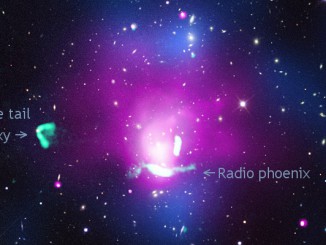
Entranced by a transit of Dione
Saturn’s 698-mile-wide moon Dione crosses the face of the giant planet in a phenomenon known as a transit. Transits play an important role in astronomy and can be used to study the orbits of planets and their atmospheres, both in our solar system and in others. By carefully observing and timing transits, scientists can more precisely determine the orbital parameters of planetary moons.









